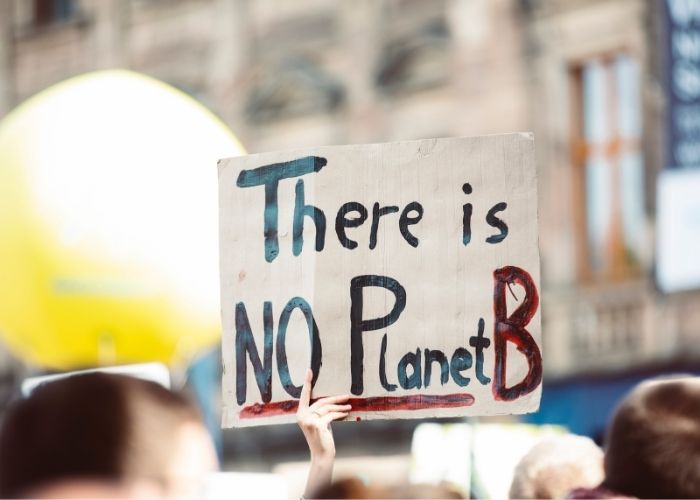UNITED KINGDOM – In Glasgow, the Climate Summit (COP26) is in full swing. For a fortnight, negotiations are taking place on various aspects of the fight against climate change. But what does global warming mean for Spain?
During the 2016 Paris climate summit, the international community committed to limit the temperature increase to no more than 1.5ºC. To meet this target, the UN says the world needs to cut greenhouse gas emissions almost in half. This must be done over the next eight years. However, in another report, the International Energy Agency says, the global average temperature will rise by 2.6°C 2100.
Are we heading for a 2.7°C warming?
A drastic and immediate reduction in greenhouse gas emissions is needed to keep the temperature rise to less than 2°C ‘We are already at 1.1°C increase. And in each of the emissions scenarios we would reach 1.5°C before 2040,’ says José Manuel Gutiérrez, director of the Institute of Physics in Cantabria (IFCA/CSIC). In the six years since Paris, several reports have shown the commitments made are insufficient to meet the 1.5ºC target. Two of these reports were in recent days. Even with the 119 updated national climate plans, emissions are expected to rise by 16% by 2030. Furthermore, this could lead to a 2.7°C warming by the end of the century, the UN report shows.
If countries stuck to what they proposed in the long term, the temperature rise could be limited to 2.2°C. However, this would require them to put their house in order in the short term. And for them to make significant cuts over the next decade. Furthermore, this does not seem realistic given the national plans.
More emission reductions and solidarity
Valvanera Ulargui, director of the Spanish Climate Change Agency, says first of all, ‘the gap in ambition between mitigation (reducing man-made greenhouse gas emissions), adaptation and financing must be closed. During a meeting with journalists this week, Ulargui said, “we are not on the right track. And closing the 1.5ºC gap means more emission reductions and requires more solidarity with the most vulnerable countries. Therefore, it is important to ensure the safety of our citizens and those in the most vulnerable countries’.
What does global warming mean for the Mediterranean?
José Manuel Gutiérrez gave three solid examples of the difference it will make in the Mediterranean whether global warming is limited to 1.5ºC or 3ºC.
A global increase of 1.5ºC by the end of the century could see the average Mediterranean temperature rise by 2.3ºC. A global temperature increase of 3ºC will make the region 4.7ºC warmer. This will mean that the typical summer day of 45ºC in some parts of Spain will become almost 50ºC.
Precipitation would decrease by 10% under a 1.5ºC scenario, compared to 25% less under a 3°C warming. This would have dramatic consequences for the climate and for the systems already under severe stress from the current drought’.
The third example is the number of days with temperatures above 40 degrees. ‘In the Guadalquivir Valley, a 1.5ºC increase would take us from 10 days per year to 25 days with 3ºC. In short: almost a month with these temperatures, which are no longer the exception’.
Heat waves in the sea
Another very clear effect is the heat waves in the sea. Little was known about them ten years ago, but they occur in the Mediterranean and in many tropical places, where coral reefs are declining very rapidly. The disappearance of coral reefs leads to the loss of fish, which in turn affects hundreds of millions of people who depend on these fisheries for their livelihoods.
Air conditioning in Galicia
But the effects of a warmer world on humans go far beyond food: they also affect health. This is according to the report The Lancet Countdown co-authored by Jaime Martínez-Urtaza, researcher at the Department of Genetics and Microbiology at the Autonomous University of Barcelona (UAM) and member of the scientific panels of the FAO, Food and Agriculture Organisation of the United Nations, and the World Health Organisation.
Martínez-Urtaza does not favour long-term forecasts because ‘climate change is already affecting our lives on a daily basis and causing health problems. You don’t have to be very old to see the trend. I am Galician and temperatures in Galicia are not what they used to be. Houses were designed for rain and low temperatures and now we see how many people are starting to consider installing air conditioning,’ he says.
Tropical mosquitoes in Spain
Ten years ago, when Martínez-Urtaza started working at the European Centre for Disease Control and Prevention in Sweden, the presence of tropical mosquitoes acting as vectors and transmitting diseases was already being monitored constantly: ‘Before, we only saw cases in travellers returning from other countries, now diseases are transmitted in Spain because conditions are favourable for the mosquitoes. The fluctuation between the minimum and maximum temperatures has decreased. Winters are milder than before and the favourable period for the mosquito has increased from one month to three months’.
Raising awareness and living differently
Martínez-Urtaza believes ‘scaremongering does not work when it comes to raising awareness in society. The question is, besides who will have to bear the huge economic costs, how will we educate future generations to live differently, because if one thing is clear, it is that we cannot continue to live as we did before. We will have to make very profound changes and we will have to discuss how we are going to do that,’ he says. And that is complicated, has a huge impact and goes far beyond a political meeting or setting up a ministry, he concludes.


